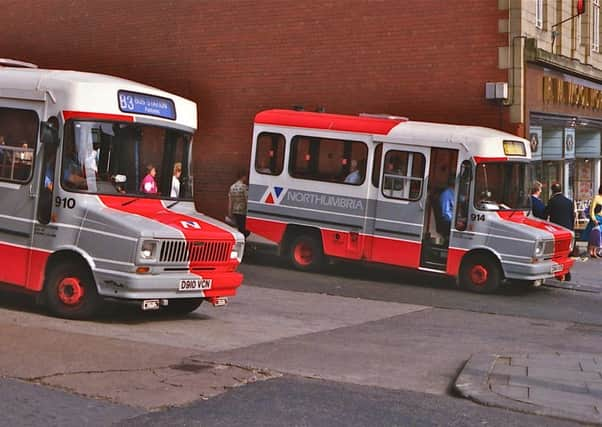Times were changing on the buses


Some had seats on the roof, accessed by steep stairs at the back. There were panels along the sides to stop people falling off. The seats on the roof became known as the Upper Deck, while those inside were the Lower Deck. Those without an upper deck were single-deck buses.
Buses were licensed by local authorities and their designs controlled by police. Fares were collected by a conductor, who helped people on and off, answered questions and enforced rules, such as no smoking on the lower deck. Fares were generally one (old) penny per mile, calculated in half-mile stages.
Advertisement
Hide AdAdvertisement
Hide AdBy 1930 the size had increased to about 20 inside and 30 outside, and some police forces permitted the top deck to be covered and wheels to be fitted with pneumatic tyres. Drivers were allowed two minutes to change a wheel.
Enforcement of the rules passed to Traffic Commissioners in 1930. Vehicles had to pass an annual quality control test, and routes were licensed and strictly controlled. In town centres buses stopped at fixed points, but otherwise stopped anywhere, until the Second World War when fixed stops came into being to save fuel. These were generally every quarter of a mile and precisely specified by the Commissioners.
Bus use was at its peak in the early 1950s when few people had cars, but as these became available there were two principal effects on buses. They experienced loss of revenue as fewer people used them, and found it harder to keep to timetables as congestion increased.
By the 1960s the size had increased to about 70 seats and the engine and door had exchanged places, with the door to the front. This enabled passengers to pay the driver, but meant the bus spending longer at stops so fares were made simpler.
Advertisement
Hide AdAdvertisement
Hide AdConductors disappeared, but it became apparent that they had served more functions than just collecting fares. They also kept good order, especially on Saturday nights. There have been attempts ever since to bring them back.
In the early 1970s a rule was introduced that everybody should be within a quarter of a mile (400m) of a bus stop. This made route planning more difficult because the 70-seat buses could not go round narrow roads in housing estates, so one or two enterprising managers introduced minibuses.
Berwick had the services of local companies of both the English National Bus Company (United) and the Scottish Bus Group (Eastern Scottish). When political ideology following the 1979 general election led to the break up the NBC and SBG and sale of their companies in 1986, the two in Berwick (by this time Northumbria and Lowland Scottish) were in hot competition. People on estates had no need of a car because there was always a minibus.
The companies could not tolerate this so the Scottish company withdrew its local services in Berwick, and with no competition the English company reduced the frequency of services. Car ownership blossomed and traffic congestion, which Berwick had never previously experienced to any significant degree, became a live issue.
Advertisement
Hide AdAdvertisement
Hide AdPrivatisation led to better services in urban areas, but operators were not so keen to run buses in rural areas. Local authorities were required to provide services to meet the needs. Need was assumed to equate to demand, but the way of assessing demand was to judge how much the services had been used. The figures were not always reliable.
There was another way – requests from residents for withdrawn services to be reinstated at the councils’ expense. Ratepayers were paying for empty buses to run in the evenings or in sparsely populated parts because councils had received requests from people who only used them occasionally.
John Wylde is the author of ‘Integrated Transport – a Will-o’- the-wisp?’, priced at £14.95, post paid and signed. Also ‘Experiments in Public Transport Operation’ at £11.95. Order through the author’s website: www.john-wylde.co.uk